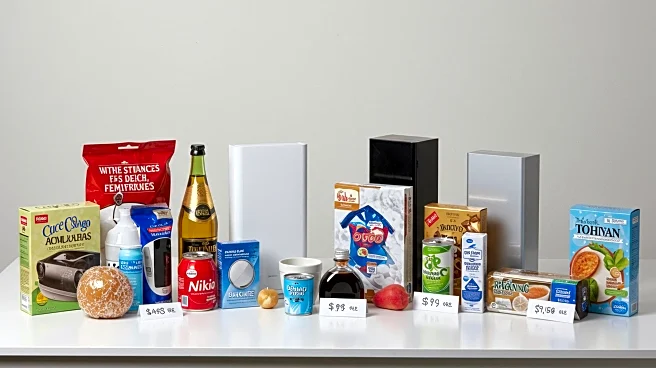What is the story about?
What's Happening?
Consumer Reports has provided guidance on how consumers can navigate the potential price increases resulting from new tariffs. These tariffs are expected to affect a wide range of products, including gadgets and groceries, potentially costing families up to $2,000 annually, according to a Yale University report. To help consumers manage these costs, Consumer Reports suggests purchasing items now if prices are stable, opting for older models of electronics, and considering less expensive brands. They also recommend choosing reliable products that offer long-term value. Additionally, Consumer Reports has launched a price tracker to monitor weekly price changes on popular products, aiding consumers in making informed purchasing decisions.
Why It's Important?
The introduction of new tariffs can significantly impact consumer spending, leading to higher costs for everyday items. This situation underscores the importance of strategic shopping to mitigate financial strain. By following Consumer Reports' advice, consumers can potentially save money and avoid the pitfalls of rising prices. The broader economic implications include shifts in consumer behavior, potential decreases in discretionary spending, and increased demand for budget-friendly products. Businesses may also need to adjust their pricing strategies and product offerings to remain competitive in a market influenced by tariffs.
What's Next?
As tariffs continue to influence market prices, consumers and businesses alike will need to adapt to the changing economic landscape. Consumers may increasingly rely on tools like Consumer Reports' price tracker to make informed purchasing decisions. Businesses might explore alternative sourcing or adjust their product lines to cater to budget-conscious shoppers. The ongoing impact of tariffs will likely prompt discussions among policymakers regarding trade policies and their effects on the economy.
Beyond the Headlines
The rise in tariffs not only affects consumer prices but also highlights broader economic and trade policy challenges. It raises questions about the balance between protecting domestic industries and the cost burden on consumers. This situation may lead to increased advocacy for policy changes and greater scrutiny of trade agreements. Additionally, the focus on reliable and budget-friendly products could drive innovation in manufacturing and retail sectors, as companies seek to meet consumer demand for quality at lower prices.
AI Generated Content
Do you find this article useful?












